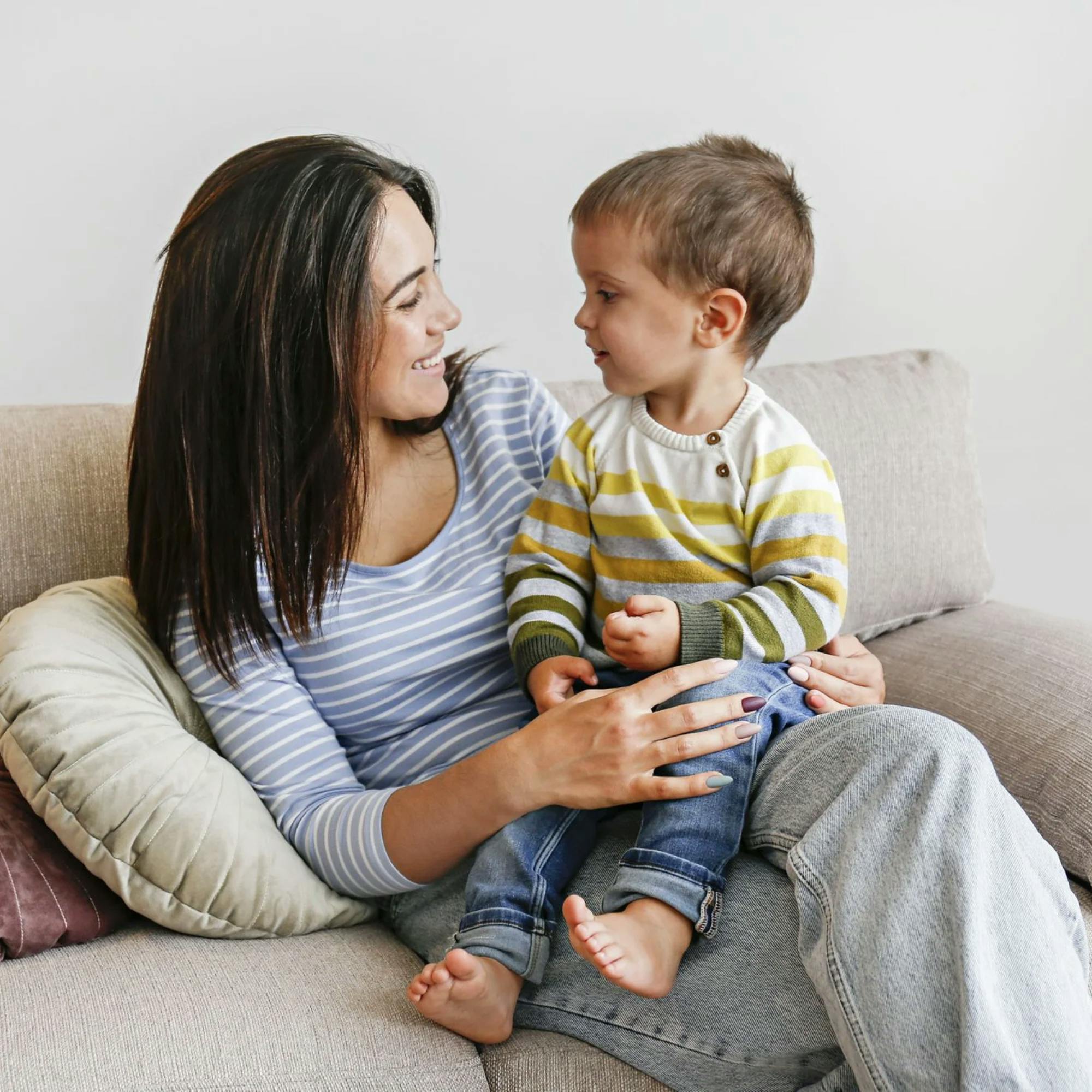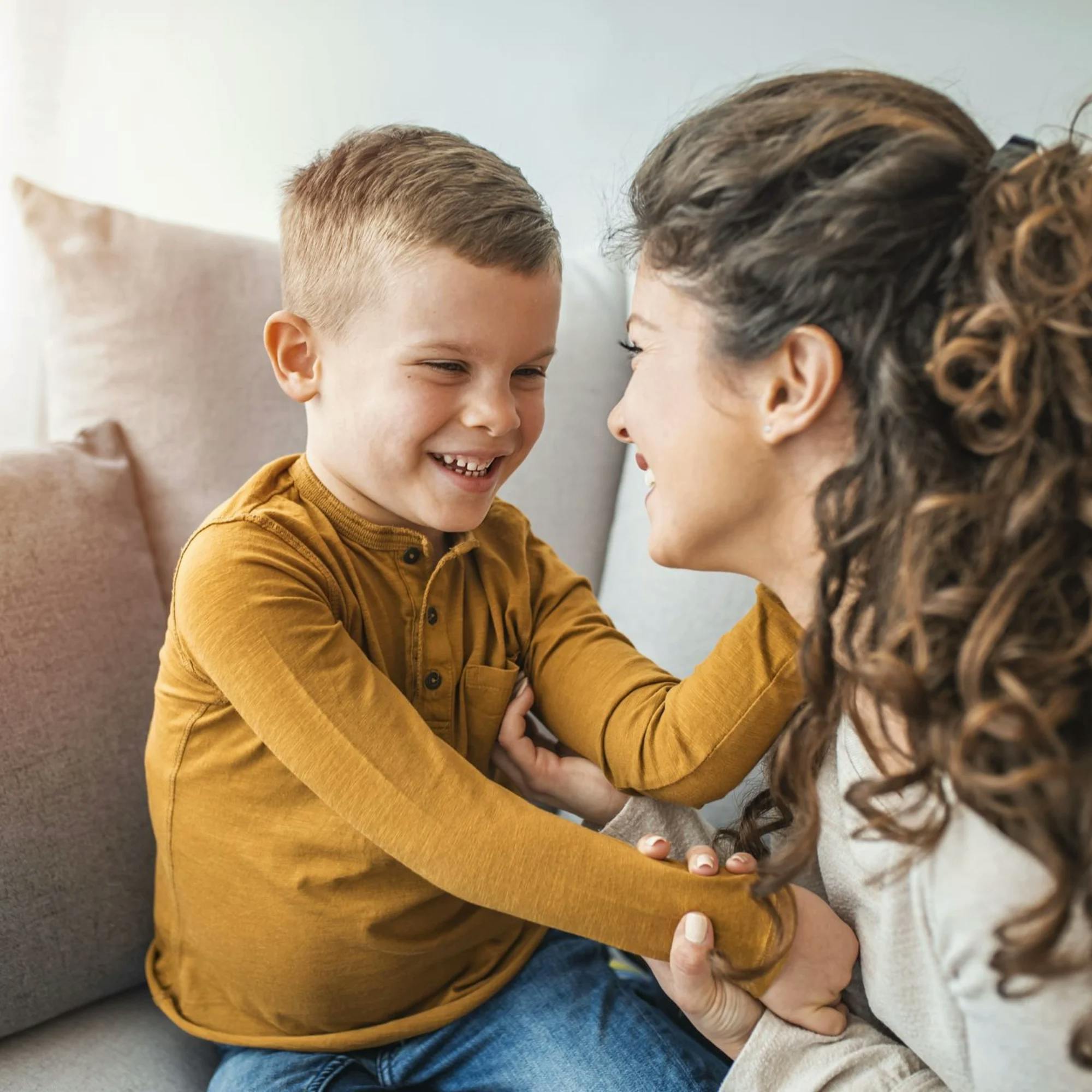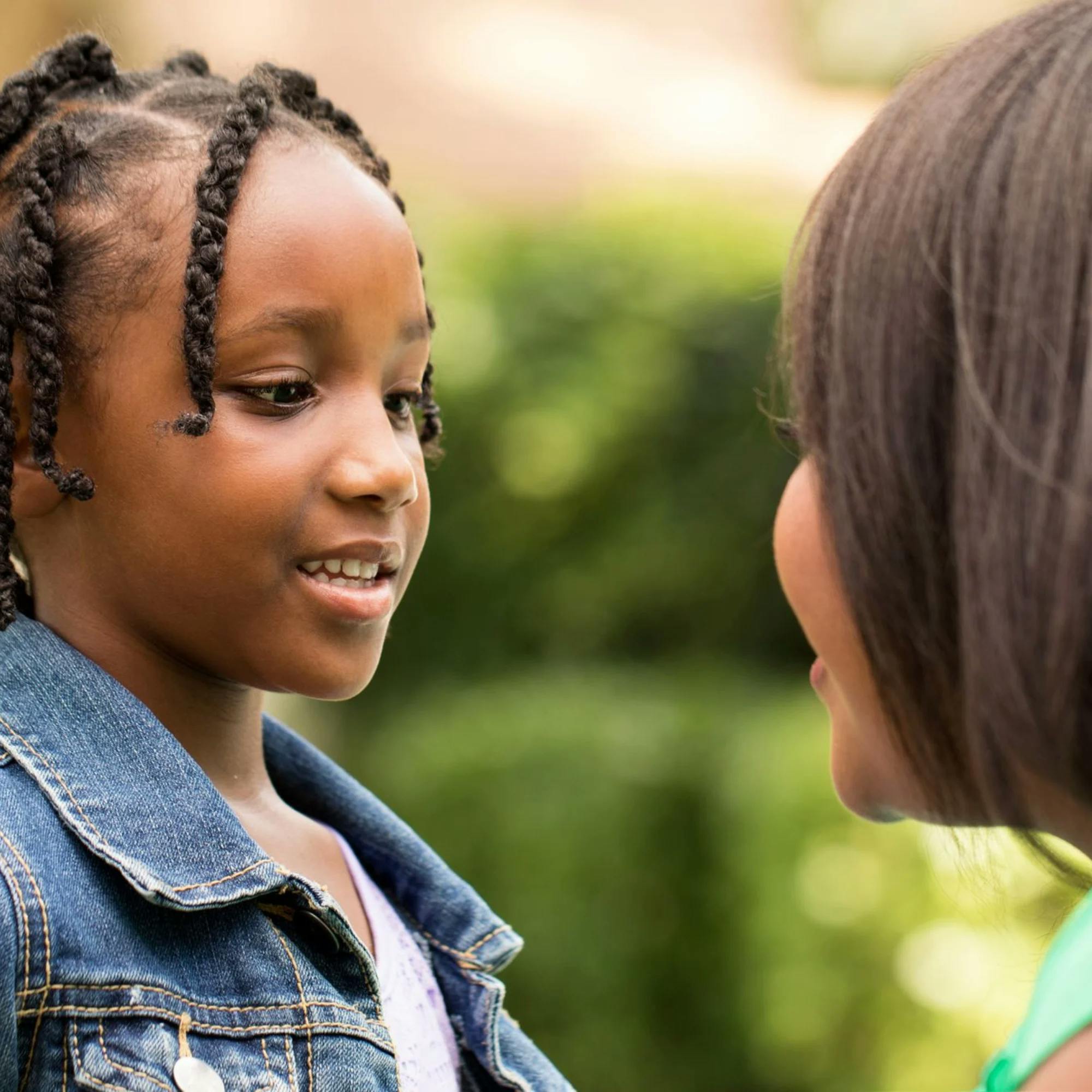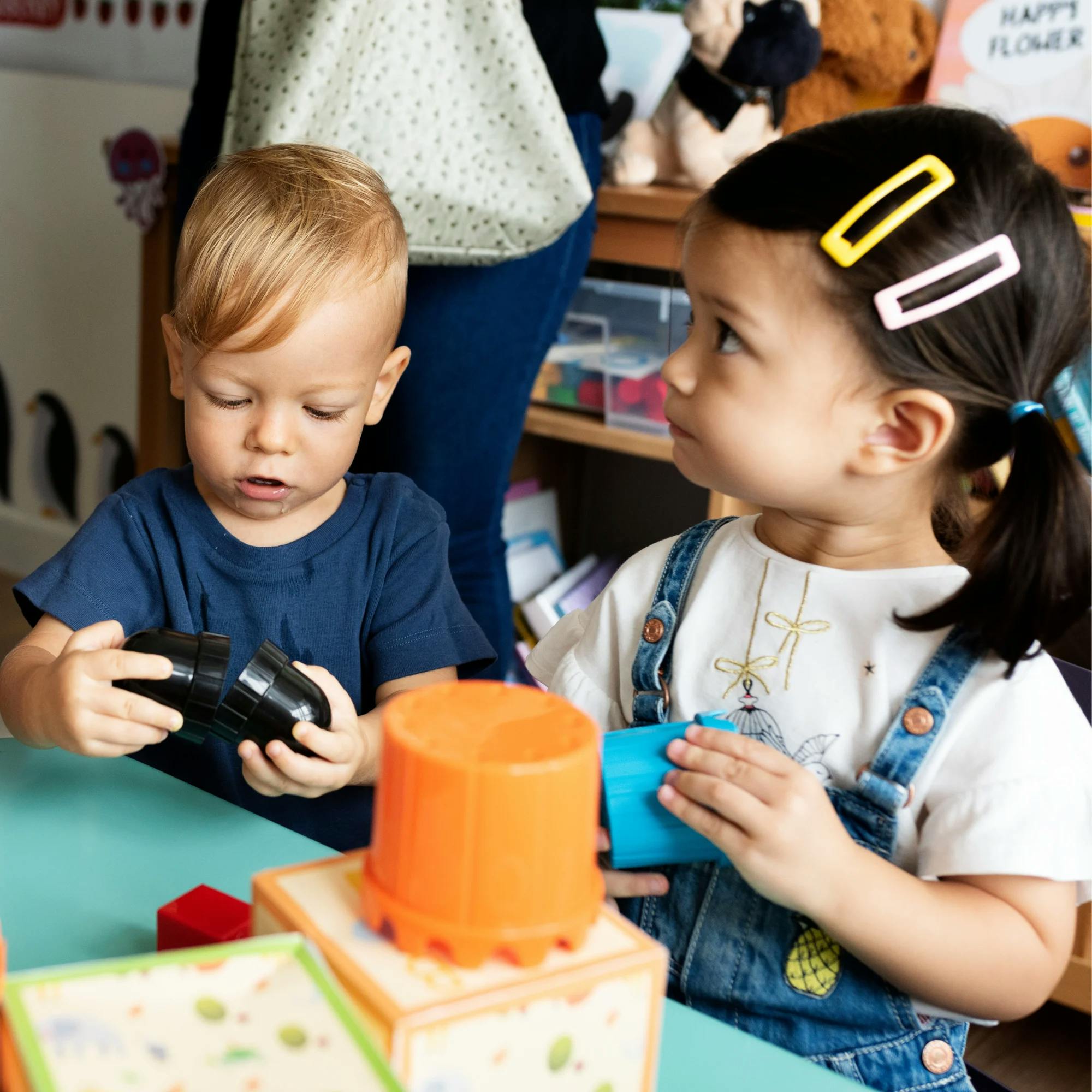
My Child Is Still Nonverbal: Now What?
 Abby Barnes, M.S., CCC-SLP
Abby Barnes, M.S., CCC-SLP
All children develop at their own pace, but it can still feel concerning if your toddler isn’t talking. As a parent or caregiver, you want to know what your child is thinking and feeling. And it’s no fun for anyone when a nonverbal toddler can’t tell you what they want!
There are a variety of reasons a child may be nonverbal. However, it’s important to know that just because a child isn’t speaking, that doesn’t mean they aren’t communicating. Read on to learn what causes a child to be nonverbal, how to help a nonverbal child communicate, and when it’s time to talk with a speech therapist.
Knowledge is power
Take 5 minutes to check your child’s speech milestones with our free online screener.
 Start the screener
Start the screenerWhat does the term “nonverbal child” mean?
The term “nonverbal” is sometimes used to describe children who aren't talking yet. A child who is nonverbal does not use any words to communicate. They may make different sounds in response to situations or people, but they do not use true words to express their thoughts, feelings, and needs.
In typical development, a child says their first word around the time they turn 1 year old. From there, toddlers begin naming people, such as “Mama” or “Dada”; labeling toys or pictures in books; and using functional words such as “more,” “please,” or “help.” Once the first word happens, there should be steady growth, with the child continually gaining more words to express what they want and how they feel.
If your child isn't talking, it's important to note that this doesn't mean they aren't communicating. Children who are nonspeaking may use gestures, such as pointing or reaching, to show caregivers what they need. Even the tone of the sounds they make–excited, frustrated, sad–can be a big clue to what they want to say. However, using words helps children express their needs most easily.


Does being nonverbal mean a child is autistic?
People may associate the term “nonverbal” with autism. It is true that autistic children can be nonspeaking. But a child can be nonverbal and not autistic. In other words, just because a child is nonverbal doesn’t mean they’re autistic.
Children who are not currently speaking may do so for many reasons. In addition to autism, the causes of being nonverbal may include a speech delay, selective mutism, or childhood apraxia of speech. An evaluation with a speech therapist can help determine the cause of a child not speaking.


How to communicate with a nonverbal child
Even if your child isn’t talking, you can still communicate with them! First, it’s important to learn how your child is currently communicating. Do they point or gesture, use facial expressions, or make certain sounds? Once you understand their approach, you can decrease any frustration your child may feel when they're trying to express their needs.
Be sure to respond to your child’s communication attempts and praise them when they try. Helping children understand the benefit of communication encourages them to communicate even more. Here’s an example: If your child points to their cup of water when they want a drink, and you respond by handing it to them, they are being rewarded for that communication. The more children practice these skills–and experience the rewards–the more they will attempt to communicate.
One key to language development is to teach your child to use a more difficult level of communication than they’re currently using. Think of it like this: Once your child is doing well with gesturing, then it's time to prompt them to make speech sounds. These could be single sounds or babbling sounds that are similar to the target word.
So, if your child points to their cup, you can begin to teach them the word “water,” or even the sound “wa.” After that is mastered, you should expect that your child will begin imitating and trying to use real words to express their thoughts.
A speech therapist can create a personalized treatment plan for your child and show you exactly how to work with them at home to help develop language.


When does a nonverbal child need speech therapy?
If your child isn't talking yet, it can be hard to know when it's time to take action–and what steps to take! Here’s how to decide on the best plan.
For children who are not speaking and not progressing in their language development, it's a good idea to talk with your pediatrician or a speech therapist. You may wonder, at what age is a child considered nonverbal? Typically, children say their first word at around 12 months old. If your child is 15 months or older and has not spoken their first meaningful word, talk with a professional.
Here are some other signs that your child may need speech therapy:
Your child’s progress in language development seems to have stopped, and you don’t notice improvements over a period of one month.
Your child’s language development has regressed, or gone backward.
Your child often gets frustrated when trying to communicate with you or others.
Find the right speech therapist for your child
We'll match you with a licensed speech therapist who's experienced in your child's needs and available when you are.
 Get started
Get startedIt might be tempting to “wait and see” if your child will catch up on their own. It’s true that some children may just need a little more time to start talking. But if a child is truly delayed in speech, then waiting may do more harm than good. Speech development is an ongoing process, and any delay in one skill will affect the ability to gain further skills.
Studies show that the earlier speech therapy begins, the better the outcomes. There is never any harm in scheduling an evaluation with a speech therapist. An evaluation can determine the cause of your child’s speech delay and what kind of treatment is best. If early intervention is recommended, it can make a world of difference.


How to help your nonverbal child talk at home
Whether or not your child is receiving speech therapy, there are many ways you can promote language development at home.
Helping a child learn to talk requires patience, practice, and encouragement. But you can easily practice during simple, everyday routines, like mealtime, playing, and running errands. After all, communication happens naturally all day long!
Remember, the goal is to prompt your child to communicate at one skill level above where they currently are. For example:
If your child cries to communicate their wants and needs, help them learn to gesture and point to what they want.
If they use gestures but don’t vocalize sounds, model the first consonant of the word you want them to say, such as “b” for “ball.”
If they’re able to use consonants or babbling sounds, model the actual word your child should imitate.
Once your child is able to imitate a word from you, pause and wait expectantly when your child is trying to ask for something. This will help them learn to use words on their own.
Know that it takes a lot of time and repetition for children who are delayed in language to start using more words. Don’t overwhelm your child with stressful practice. Keep it lighthearted and fun!

Frequently asked questions
At what age is a child considered nonverbal?
Children typically say their first word around the time they turn 1 year old. If a child has not said their first word by 15 months, it’s a good idea to talk with your pediatrician or a speech therapist.
What causes a child to be nonverbal?
There are a variety of reasons a child may not be speaking, including a speech delay, autism, selective mutism, or childhood apraxia of speech.
Can a child be nonverbal but not autistic?
Yes. Some autistic children are nonspeaking, but not all nonverbal children are autistic.
Will nonverbal autistic kids ever talk?
With early intervention and the right support, some nonspeaking autistic children can make major progress in their communication abilities. They may also be able to develop spoken language. About 25% to 30% of autistic children remain minimally verbal or nonspeaking. You can learn more in this article.
When should a nonverbal child start speech therapy?
If a child has not said their first word by 15 months, seems behind compared to other children the same age, or gets frustrated when trying to communicate, it’s best to contact a speech therapist.
Key takeaways
A child who is nonverbal does not use any words to communicate. They may make different sounds in response to situations or people, but they don't use words to express their wants, needs, or feelings.
A child may be nonverbal because of a speech delay, autism, selective mutism, or childhood apraxia of speech. A speech and language evaluation can help determine the cause.
One key to language development is to teach your child to use a more difficult level of communication than they’re currently using. For example, once your child is able to point to what they want, you can prompt them to make sounds.
Contact a speech therapist if your child is older than 15 months and hasn’t said their first word, if their language development seems to have stopped or gone backward, or if they often get frustrated when trying to communicate.
How Expressable Can Help
Concerned your child isn't reaching age-expected milestones? Looking for communication support from a professional? Expressable is a national online speech therapy practice serving children and adults. We treat all major areas of communication and feeding, offer flexible hours including evenings and weekends, and accept most major health insurance plans. We’re proud to have earned more than 3,000 5-star reviews from our clients (4.9/5 average).
Our therapy model is centered on parent and caregiver involvement. Research proves that empowering caregivers to participate in their loved one’s therapy leads to better outcomes. That’s why we combine live, 1-on-1 speech therapy with personalized education and home practice activities for faster progress.
Communication is more than words. It’s how we share how we feel and show who we are. We’re here to help you or your child do just that.










